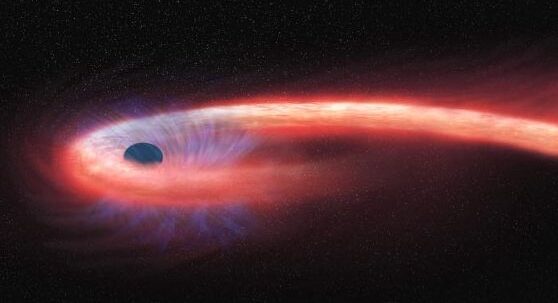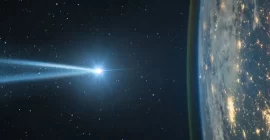Of all the terror lurking in the depths of space, one class of the object stands out above the other: black hole. If you are close enough to a black hole, you will travel in one direction, experiencing a phenomenon called, quite pleasant, spagedification. The gravitational power that pulls your feet will stretch you like noodles, compress your body horizontally while extending it vertically. As terrible as this possibility, no human being experienced it – but stars, and new research helps us understand what happens to stars that are so vulnerable by very large gravity (through the University of California, Berkeley).
Astronomers observed a star who became a spagedification by the black hole in 2019, when ventured too close and torn. This process, technically called tidal disorders, occurs because the gravity of black holes is so strong that it attracts harder on one side of the object than the other, distorting it. And studying the effects after this violent interaction can help astronomers learn more about the great strength of the black hole.
“One of the craziest things that can be done by the supermasi’s black hole is to tear the stars by its very large tidal tidal troops,” said one research writer published in the monthly notification of the Royal Astronomy Society, Wenbin Lu from the University of California, Berkeley. “The event of this tidal disorder is one of the few ways of astronomers knowing the existence of supermasif black holes in the galaxy centers and measuring their nature. However, due to extreme computing costs in simulating such events, astronomers still do not understand the complicated processes After the tidal disorder. “
What happens to the spage deals of stars
When a star approaches a black hole and torn, a large amount of material is thrown out at a large speed of up to 10,000 kilometers per second. This problem forms gas clouds around the black hole in the form of a ball, which makes this event difficult to observe because gas blocks many views.
To understand more about how this process occurred in the 2019 observation case, the researchers saw the polarization of light. Polarization refers to the direction in which light waves vibrate, and by seeing it, researchers can see that gas clouds are symmetrical balls (through the University of California, Berkeley). This is the first time the form of such gas clouds has been confirmed, according to other researchers, Alex Filippenko from the University of California, Berkeley.
This finding also helps support the theory that this spagefficient event is accompanied by strong winds of gas that blows from a black hole. “People have seen other wind evidence coming out of this event, and I think this polarization study clearly makes evidence stronger, in the sense that you will not get the geometry of the ball without having enough wind,” said Lead who leads, “Said Lead writer Kishore Patra, also from the University of California, Berkeley.” The interesting fact here is that a small part of the material in the star that rotates in the end does not fall into a black hole – it is fascinated by a black hole. “




